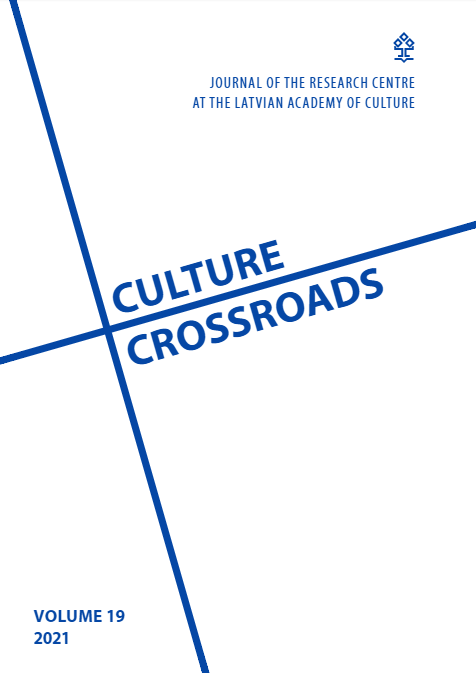MULTIMODAL EXPRESSIONS OF FIGURATIVE THOUGHT: A STUDY OF THE SOVIET OCCUPATION (1940-1964) POSTERS
MULTIMODAL EXPRESSIONS OF FIGURATIVE THOUGHT: A STUDY OF THE SOVIET OCCUPATION (1940-1964) POSTERS
Author(s): Elīna VeinbergaSubject(s): Cognitive linguistics, WW II and following years (1940 - 1949), Post-War period (1950 - 1989), History of Communism, Stylistics
Published by: Latvijas Kultūras akadēmija
Keywords: cognitive stylistics; figurative pattern; metaphor; metonymy; multimodal discourse;
Summary/Abstract: The aim of the article is to analyse figurative language in use. According to the core writings in cognitive linguistics, figurative language is representative of figurative thought. Human beings express themselves figuratively because their thinking is primarily figurative. Similar ideas have been advanced since the writings of Max Black, Charles K. Ogden, I. A. Richards, and Paul Ricoeur; however, these ideas gained a wider recognition at the end of the 1980s, when George Lakoff and Mark Johnson published their seminal work “Metaphors We Live By”, thus propelling the development of cognitive linguistics and cognitive stylistics. The properties of figurative thought are excellently demonstrated via those examples where interaction of the verbal and visual discourse occurs. The poster collection of the National Library of Latvia is well-suited for this purpose. The posters created during the Soviet occupation (1940–1991) abound in propaganda; nevertheless, they present a remarkable source for research. Seven posters from 1940 to 1964 are analysed in this article. The eventual results demonstrate the pervasive use of metonymies and their interaction with other figurative patterns to shape multimodal discourse.
Journal: Culture Crossroads
- Issue Year: 19/2021
- Issue No: 1
- Page Range: 309-323
- Page Count: 15
- Language: English

